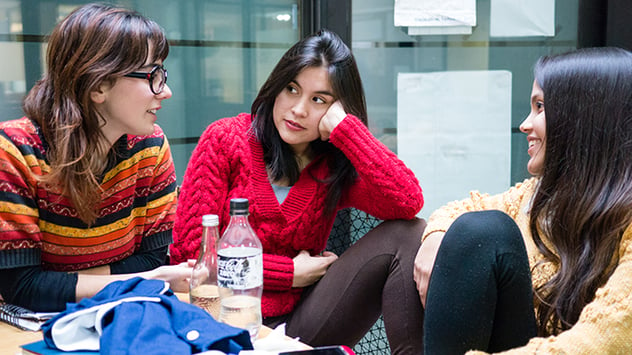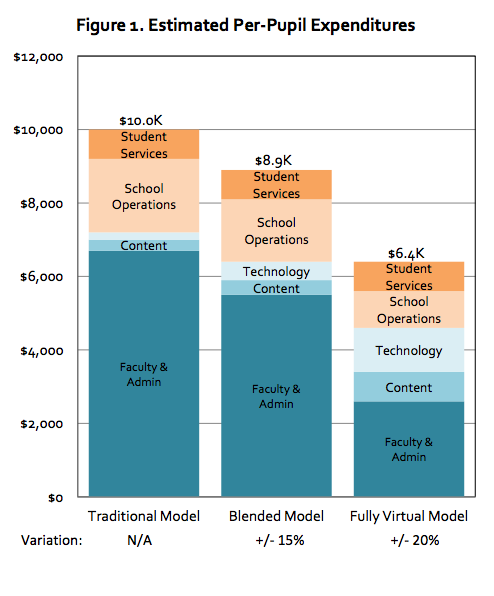We've spoken a lot about the importance of training in the hospitality industry. ‘Duh’, you’re probably thinking. We're hospitality training providers. Of course we’re going to be big cheerleaders for education.
But one thing we haven't talked about is the importance of blended learning for up and coming hospitality professionals.

Photo: Francisco Osorio
What is blended learning?
Blended learning combines in-person teaching and online education. It treats them as complementary, rather than alternatives for one another.
Technology has the potential to increase how quickly and broadly we learn. It has changed how we expect information to be delivered. University students can now access video recordings of their lectures online. Ivy League universities like Harvard have web-learning portals available for people who have no interest in a traditional classroom environment. We’re transitioning away from the days when a teacher would simply get up in front of a room and lecture for an hour.
This isn’t a bad thing at all. In fact blended learning can result in a significantly better-rounded student.
Here are the main ways it can benefit hospitality students.
Blended learning accommodates different learning styles
No one student learns in exactly the same way. It's said that there are seven major learning styles:
Visual – Visual learners have a preference for videos, pictures, diagrams and handouts. They perform well after watching someone else complete the task first.
Aural – Auditory learners prefer to listen to spoken instructions. They perform at their best when they can have a conversation about the subject or listen to an expert speak about the material.
Verbal – Verbal learners retain information by speaking and writing.
Physical – Physical or kinesthetic learners prefer practical hands-on experience. They learn as they go by touching and doing.
Logical – Logical learners need to understand the reasoning behind content. They like brainteasers and games that help them work out strategies.
Social – Social learners prefer learning in classrooms or one-on-one with an instructor. They respond well to group activities and role-playing.
Solitary – Solitary learners are introspective and independent. They work best alone through self-study, where they have the chance to go away and reflect on the content.
Blended learning makes it far easier to cater to a range of these learning styles. As you can see from the qualities listed above, it’s not always going to be possible to cater to all of those styles in a classroom environment, where students sit and listen to their teacher's lesson.
It’s also not possible for online learners to gain hands-on experience in a professional setting, which is obviously very important in hospitality. Through blended learning, students benefit from a more three dimensional curriculum, which prevents them from becoming restless or unmotivated because their needs aren’t being met.
Students can work and study simultaneously – a must in hospitality
In an industry like hospitality, work experience is just as important as a qualification.
A study on the benefits and challenges hospitality students experience by working and studying at the same time concluded that students need to obtain industry-based experience to be prepared for the demands of the industry.
It also found that graduates who were employed while completing their degrees were more likely to stay in the hospitality industry long-term.
But students who work and study full time suffer from stress, decreased class attendance and decreased study time. They need more flexible educational options to support their work demands.
Enter blended learning. Students who work in busy restaurants and hotels can strike a balance between their work and study commitments, because they aren’t required to be on campus all the time.
Students can learn at their own pace
It’s also worth noting that not everyone learns at the same pace. Unfortunately classrooms can’t dwell on a topic if some students aren’t picking it up. Teachers also can’t surge ahead if people are becoming restless because they have already grasped the material.
Giving them the ability to self-study in certain subjects means that the more advanced students can progress more quickly, and the students who need more time to review material have the resources to do so.
It’s easier for instructors to personalize learning
It’s hard to know exactly how students are responding to classroom learning. You have some students who are more than happy to share their struggles, while others will suffer in silence until it’s too late.
The great thing about online learning is that it offers measurable real-time data on your students’ interests, performance and participation. Through blended learning, instructors can use the insights they have gained through the online component of their course to enhance their classroom activities.
Lower costs = more enrollments
Hospitality workers are some of the lowest paid workers in the world. And unfortunately that means many of those who would like to gain a hospitality degree can’t, simply because they can’t afford the additional costs that come with enrollment.
The exorbitant cost of textbooks, for example, can be enough to prevent a low-income earner from signing up for a course. Worldwide, the price of university textbooks increased by 82% between 2003 and 2013. Most of these textbooks are also updated every year, which means students can’t always purchase secondhand volumes, because their content is already out of date.
Blended learning reduces this reliance on textbooks. Instead, students can access much of the material they need online. This also reduces the burden on teachers, who have to print and photocopy reams of paper before every lesson. They can spend less time preparing for class (because the material is already there), and more time giving their students individual attention.
Schools can reallocate savings to other areas that will benefit students
A really interesting study called ‘The Costs of Online Learning’ claims that the savings that result from blended learning allow schools to reallocate their budgets in other areas; areas that will benefit students.
For example, Californian blended learning school Rocketship Education saves about $500,000 per school of 450 students per year by decreasing teacher and facilities costs through its online Learning Lab. It then reallocates this money into other areas that it deems important, such as academic deans, talent development and teacher salaries.
This graph from the same study, which is based on public schools in the US, demonstrates that blended learning can result in savings of up to $1,100 per student.

Why hospitality schools need blended learning
If hospitality schools can find a way to incorporate blended learning into their curriculums, then their students will benefit in so many ways. There is no understating how important flexibility is for hospitality students, who have the potential to burnout before they even embark on their careers.
By combining practical hands-on learning, personal instruction and technology, these schools will produce significantly more qualified workers. And the hospitality industry itself will benefit from that.